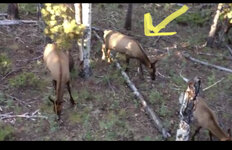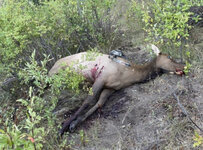hunting101
FNG
- Joined
- Aug 5, 2021
- Messages
- 1
Hi all!
I live in Northern Idaho and am planning on taking an elk with a Bow this year out of a tree stand. I have identified several good looking spots on the maps, they are usually benches on steep northern slopes with water below.
I'm looking for some insight on what peoples strategies are on tree stand placement
Are you choosing different stand placements in the morning vs evenings?
Would anyone consider setting up in other places other than northern facing slopes?
Any insight on setting up near or on a saddle?
Would you rather start hunting in the morning from tops of ridge-lines or in the creek basins?
I haven't had too much time to put boots on the ground in the last month but I was able to find a herd of cow/calfs in early august. they were hanging out in a dense forest with an area of thick cover which may be there bedding area. There were several old logging roads that made getting around in the area a breeze.
I live in Northern Idaho and am planning on taking an elk with a Bow this year out of a tree stand. I have identified several good looking spots on the maps, they are usually benches on steep northern slopes with water below.
I'm looking for some insight on what peoples strategies are on tree stand placement
Are you choosing different stand placements in the morning vs evenings?
Would anyone consider setting up in other places other than northern facing slopes?
Any insight on setting up near or on a saddle?
Would you rather start hunting in the morning from tops of ridge-lines or in the creek basins?
I haven't had too much time to put boots on the ground in the last month but I was able to find a herd of cow/calfs in early august. they were hanging out in a dense forest with an area of thick cover which may be there bedding area. There were several old logging roads that made getting around in the area a breeze.
Last edited:


